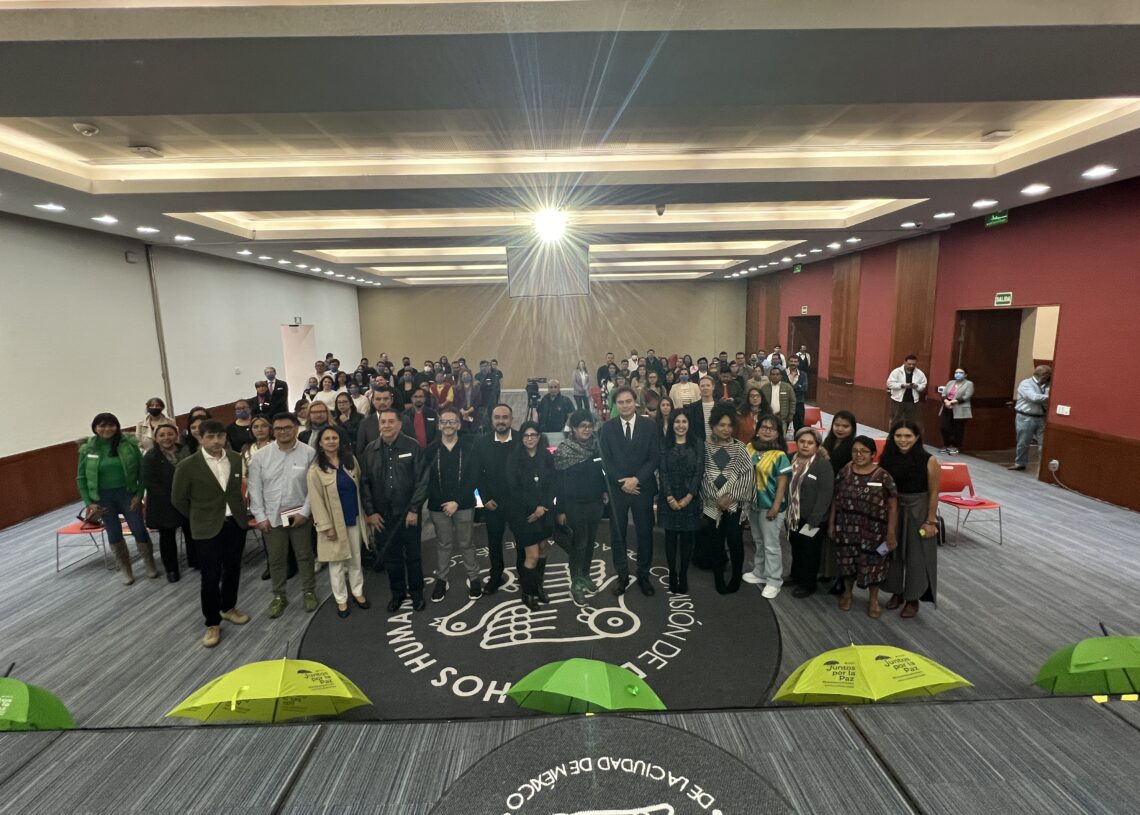In the framework of its National Addiction Prevention Strategy ‘Together for Peace’ in Mexico, COPOLAD III has supported the National Commission of Mental Health and Addictions of Mexico (CONASAMA) in the development of two guides to improve care for vulnerable groups.
The first of the publications is aimed at LGTBIQ+ groups. It is a tool designed to guide professionals working with sexually diverse communities that use psychoactive substances and the users themselves. It provides a person-centred, evidence-based approach, while promoting empathy and understanding of drug use from a human rights perspective.
The guide is based on CONASAMA’s explicit need to address the drug use of the historically marginalised population of sexual diversity. It therefore implies redressing a grievance towards this group. It has been done from the perspective of specificity, because specific risk factors operate on people of sexual diversity, including stigma.
The book is the result of a collective work between CONASAMA, EPISTEME, Emma Rodríguez and Jorge Antonio Aragón, carried out with the support of COPOLAD III. It was presented on 25 June at the Human Rights Commission of Mexico City, days before the International LGTBI+ Pride Day, which is commemorated on 28 June.
Methamphetamine and fentanyl have created a serious social and health crisis
The second work sponsored by COPOLAD, a pioneer in Mexico, is a technical fieldwork guide, accompanied by a toolkit, which aims to address the use of methamphetamine and fentanyl. The presentation of this work, designed for specialists in health and drug use, took place on 27 June at the Colegio Frontera Norte in Tijuana, an institution dedicated to high-level research and teaching, with the aim of generating scientific knowledge about regional phenomena on the US-Mexico border.
The guide stems from CONASAMA’s need to address the problems caused by methamphetamine and fentanyl in certain areas of the country, particularly in northern border populations and migrant communities. Between 2013 and 2020, the number of people receiving treatment in Mexico for problem methamphetamine use grew by 218 per cent. As for fentanyl, 50 times more potent than heroin, it has spiked fatal intoxications in recent years, creating a serious social and health crisis in the United States and Canada. The influence of the substance use patterns of these two countries is present in Mexico, although on a smaller scale and limited to the northern border, where phenomena linked to fentanyl overdoses, including adulteration, intoxications and deaths, have been detected.
The paper analyses protective factors and risk factors as a preliminary step in addressing methamphetamine and fentanyl use. Purely technical issues are presented from a harm reduction perspective: dosage, routes, presentations, times and contexts of use. This approach aims to respond to users, especially vulnerable or specific groups, such as long-distance truck drivers or workers in the maquiladora industry.
The work emphasises linking consumers with public resources, reducing barriers to access to health treatment. It has been realised through coordination between CONASAMA, Episteme and the Ria Institute, with the support of COPOLAD.
(Only in Spanish)
Download guide sexuaL diversity
Download guide of menhamphetamine and fentanyl use
Descargar Toolkit Metanfetamina y Fentanilo






